#SH-2 Seasprite
Photo

(via Easyrider by Mark Karvon (SH-2F Seasprite))
19 notes
·
View notes
Video
Vietnam war by Linh Yoshimura
Via Flickr:
1964 – View of the deck of USS Ticonderoga (CVA-14) during deployment in the Tonkin Gulf. Photo by Bill Ray. Notice, visible on the right are two A-3 Skywarrior, an F-8 Crusader and a SH-2 Seasprite
5 notes
·
View notes
Note
since you asked about the hot military aircraft: https://uss-hornet.org/visit-hornet/exhibits/aircraft
it was primarily the SH-2 Seasprite that caught my eye. yes my partner has (lovingly) teased me for being into literal attack helicopters ever since.

YO anon thank you for sharing.
Also. May I share a compilation of aircraft cheesecake photos I took at the museum in Dayton uhhh 14 years ago?
youtube
2 notes
·
View notes
Text
21 Helicopters used in the Vietnam War
ATTACK HELICOPTERS-
Bell AH-1 HueyCobra/ Cobra
Bell AH-1 J SeaCobra
OBSERVATION HELICOPTERS-
Hughes OH-6 Cayuse (Loach)
Bell OH-58 Kiowa
LIGHT UTILITY HELICOPTERS-
Bell H-13 Sioux
Bell Model 206
Hiller OH-23 Raven
Kaman HH-43 Huskie
GUNSHIP HELICOPTERS-
Bell UH-1B/ C Huey Cobra / Frog
ASW HELICOPTERS (Anti-Submarine Warfare)
Kaman SH-2 Seasprite / Super Seasprite
DRONE ANTI-SUBMARINE HELICOPTERS-
Gyrodyne QH-50 DASH
SEARCH AND RESCUE HELICOPTERS-
Sikorsky HH-3E Jolly Green Giant
HEAVY-LIFT TRANSPORT HELICOPTERS-
Sikorsky CH-37 Mojave
Sikorsky CH-53 Sea Stallion
Sikorsky CH-54 Tarhe
TRANSPORT HELICOPTERS-
Boeing CH-47 Chinook
Boeing Vertol CH-46 Sea Knight
Piasecki H-21 Workhorse
CH-34 Choctaw
MULTIPURPOSE HELICOPTERS-
Bell UH-1 Iroquois
Sikorsky H-19 Chickasaw
https://executiveflyers.com/helicopters-used-in-vietnam/#:~:text=24%20Helicopters%20Used%20in%20Vietnam%20%28And%20Their%20Purpose%29,...%208%20Heavy-Lift%20Transport%20Helicopters%20...%20More%20items
2 notes
·
View notes
Text
US Navy Kaman Sh-2 Seasprite Hawaiian Shirt For Men And Women
The US Navy Kaman Sh-2 Seasprite Hawaiian Shirt is a great shirt for men and women. It is made of 100% breathable cotton and has a comfortable fit. The shirt has a kangaroo design on the back neckerchief and is made to provide a comfortable and stylish feel.
Get it here : US Navy Kaman Sh-2 Seasprite Hawaiian Shirt For Men And Women
Home Page : tshirtslowprice.com
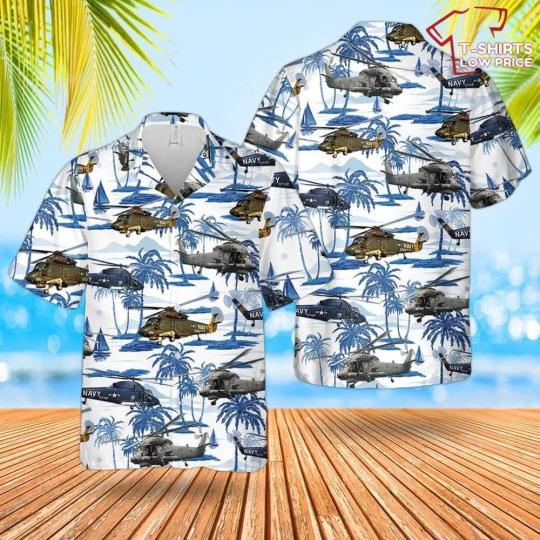
1 note
·
View note
Text
Helicopters Origins
The first functional helicopter was invented on September 14, 1939 which took it's first flight at Stratford, Connecticut. The first free flight took place on May 13, 1940. The innovative 28-foot diameter, three-blade rotor allowed for variable pitch of the blades with a blade speed of 250 to 300 mph.
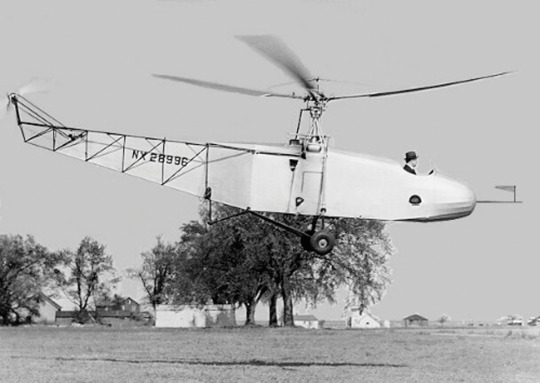
The helicopter was designed by Igor Ivanovich Sikorsky. He was the founder of the Sikorsky Aviation Corporation. He played a major role in aviation due to his gifted determination and extended aeronautical engineering. with designing the single-rotor VS-300 helicopter , the basis for the later XR-4 design that was the first successfully mass produced military helicopter and an invaluable tool in search, rescue, and supply missions.

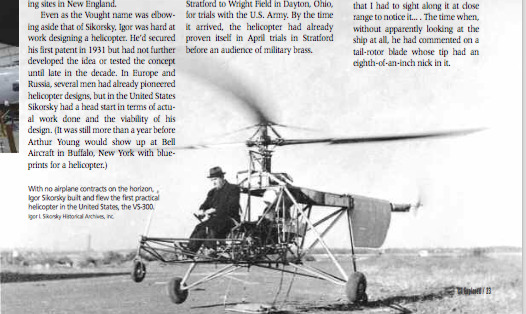
The First Combat Helicopter
After Skirosky's first helicopter, called the R-4 went into mass-production, it also became the first helicopter in U.S Military service and also the first helicopter to be operated from a ship's deck.
After a few modifications, the helicopter became the YR-4B and on April 25th, 1944 it became the first helicopter to ever fly in combat.
youtube
It is estimated that in 2001 and one the number of Military Helicopters was at 29,700 with North America having the largest percentage of around 33.5%.

https://www.iqpc.com/media/1003026/77915.pdf
What is a Helicopter?
A helicopter is a type of rotorcraft in which lift and thrust are supplied by one or more horizontally-spinning rotors. There are three basic types: hinge-less, fully articulated, and teetering. Some modern rotor systems could even use a combination of these three.

The number, size and type of engine used on a helicopter determines the size, function and capability of that helicopter design. The earliest helicopter engines were simple mechanical devices, such as rubber bands or spindles, which relegated the size of helicopters to toys and small models.
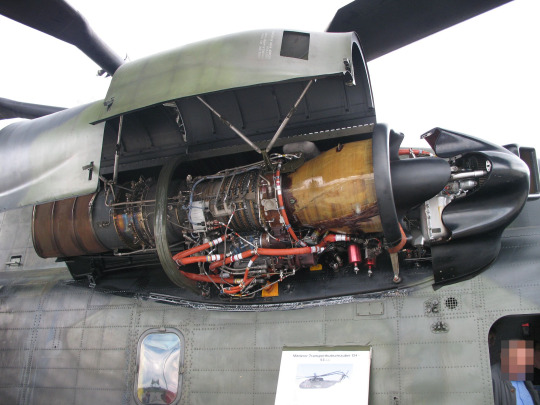
youtube
These are some of the helicopters used in the Vietnam War. The types of helicopters deployed by the U.S in the Vietnam War ranged from massive troop transport helicopters to to smaller multipurpose and attack helicopters, and even helicopter drones.
Hughes OH-6 Cayuse (Loach)
-a light helicopter with a single engine and a four-bladed main rotor. It was used for transporting personnel, escorting other aircraft and naval vessels, attacking enemy units, and acting as an observation post.
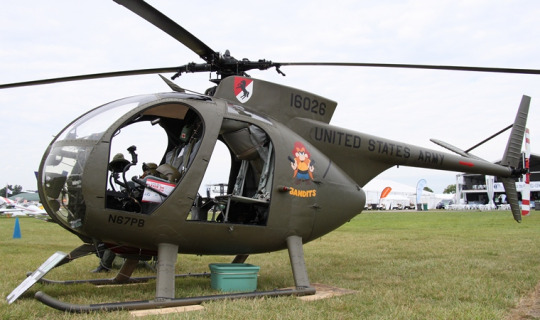
Hiller OH-23 Raven (Model UH-12)
-a scouting helicopter during the early phases of the war, before it was eventually replaced by the Cayuse in early 1986. Sometimes it would also be used for medical evacuation purposes.

Kaman SH-2 Seasprite / Super Seasprite
-an anti-submarine and anti-surface helicopter that had over-the-horizon targeting facilities. The Kaman SH-2 could extend and increase both shipboard sensor and weapon abilities against different types of enemy units, including submarines, ships, and patrol craft with anti-ship missiles.

Sikorsky HH-3E Jolly Green Giant
-a twin-engine transport and search helicopter. It was nicknamed the “Jolly Green Giant” during the war. These choppers were modified for combat rescue missions and had self-sealing fuel tanks, rescue hoist, and in-flight refueling abilities.
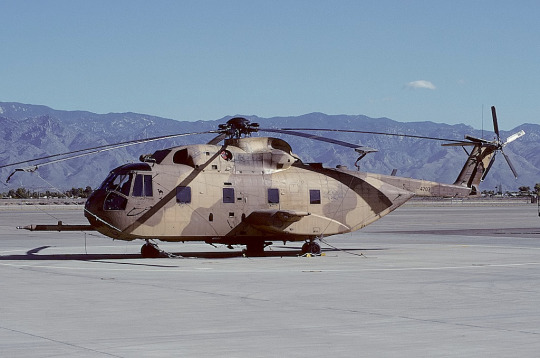
Piasecki H-21 Workhorse
- the fourth line of tandem rotor helicopters developed by Piasecki Helicopters. The-21C was extensively used by the US Army to transport troops and supplies.

Mil Mi-4 (Hound)
-a Soviet transport chopper used both for civilian and military purposes. It was mostly used as a transport chopper, but it could also deliver supplies to troops.
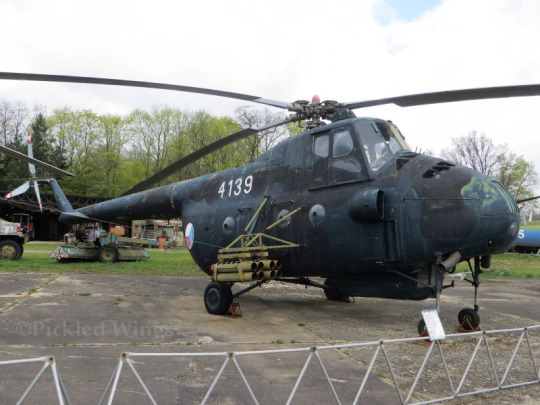
It's interesting how many types of helicopters are in the world and how although most of them look fairly similar in shape and size, their military/commercial purposes are very different.
My personal favourite models that I have looked at are the Hiller OH-23 Raven and the Piasecki H-21 Workhorse due to their unusual designs.
1 note
·
View note
Text
24 Helicopters Used in Vietnam & Their Purpose
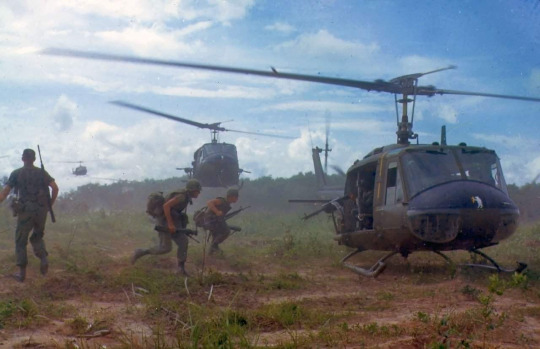
There were so many helicopters used in the Vietnam war, between the USA (United States of America) and Vietnam. I am researching this so I know how many different types of helicopters there are in the military and what they are all used for.
Here is the list of the helicopters that were used in the Vietnam war:
Attack Helicopters
Bell AH-1 HueyCobra / Cobra
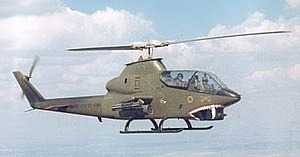
Bell AH-1 Huey Cobra / Cobra is a single-engine attack helicopter produced by Bell Helicopter.
It was used for:
Primary attack helicopter for aerial assaults
Air cavalry
Bell AH-1J SeaCobra
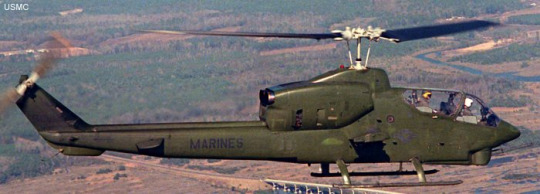
Bell AH-1J SeaCobra is an attack helicopter that has 2 engines and was developed by the same people who created the Bell AH-1 HueyCobra / Cobra. It was used later on in the Vietnam war.
It was used by:
The Marine Corp
It was used for:
Sea-based parts of the war like the Ho Chi Minh Trail in 1972.
Various assaults
Emergency military operations conducted by the US Marine Corps.
Observation Helicopters
Hughes OH-6 Cayuse (Loach)
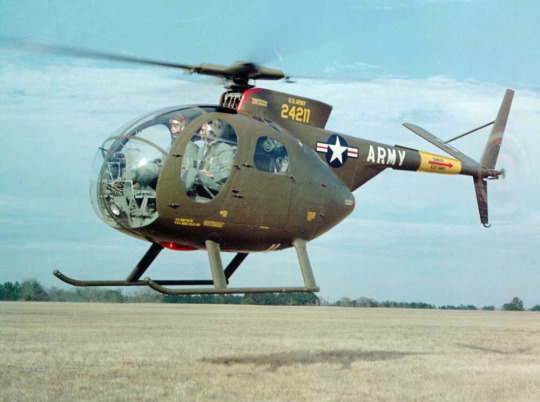
Hughes OH-6 Cayuse is a light helicopter that has 1 engine and a four-bladed rotor.
It was used for:
Transporting personnel
Escorting other aircraft
Escorting naval vessels
Attacking enemy units
Acting as an observation post.
The US military primarily mainly used the OH-6 for observational and reconnaissance purposes.
Bell OH-58 Kiowa
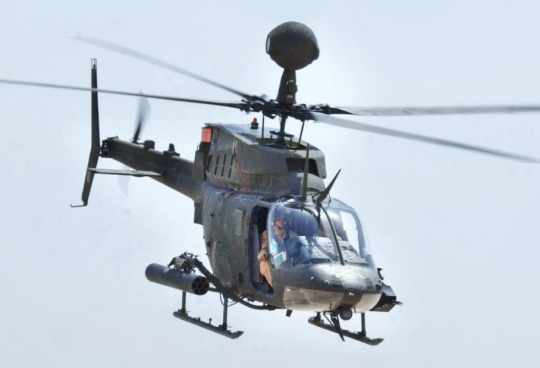
Bell OH-58 Kiowa has 1 engine and a single rotor.
It was used for:
Observation
Reconnaissance
Utility
Providing combat support
Light Utility Helicopters
Bell H-13 Sioux
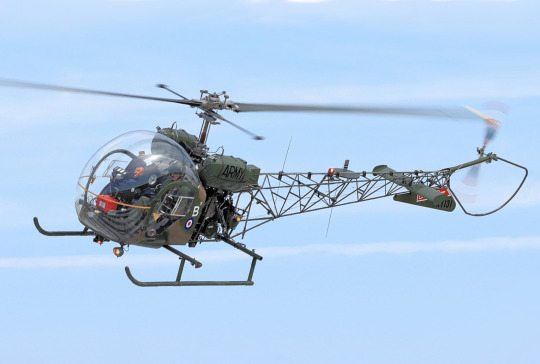
Bell H-13 Sioux is a lightweight single-engine and has a single-rotor.
It was used for:
Multiple roles
Ranging from transporting troops
Conducting medical evacuations
Performing reconnaissance
Observational activities
Bell Model 206

The Bell 206 is a line of both single and twin-engined helicopters with two primary rotor blades.
It was used for:
General utility helicopter
Transporting troops
In high command, by serving observational and reconnaissance roles.
Hiller OH-23 Raven (Model UH-12)

It was used for:
Scouting helicopter
Medical evacuation purposes
Kaman HH-43 Huskie

It was used by:
US Air Force
US Navy
US Marine Corps
It was used for:
Aerial combat
Conducting rescue operations
Short overland search
Rescue missions
During the Vietnam war, the HH-43 Huskie was used for more rescue missions than all other aircraft combined. It was used prolifically because of its unique hovering abilities.
Gunship Helicopters
Bell UH-1B/C Huey Cobra / Frog
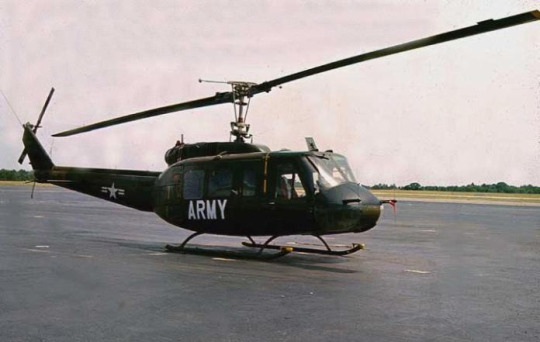
The Bell UH-1B/C was modified to include a set of machine guns for attacking ground targets.
ASW Helicopters (Anti-Submarine Warfare)
Kaman SH-2 Seasprite / Super Seasprite
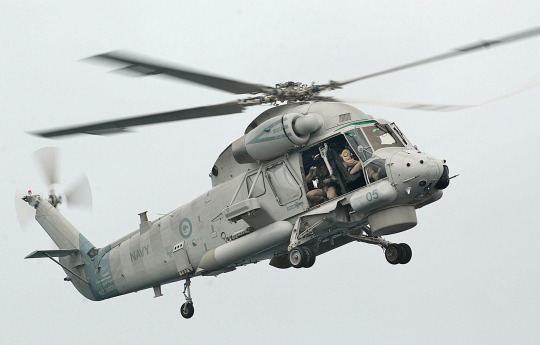
Kaman SH-2 Seasprite / Super Seasprite was used to track and attack submarine ships, patrol crafts, ship missiles and surface helicopters. However, it was mostly used for rescuing downed friendly aircrews instead of direct combat.
Drone Anti-Submarine Helicopters
Gyrodyne QH-50 DASH
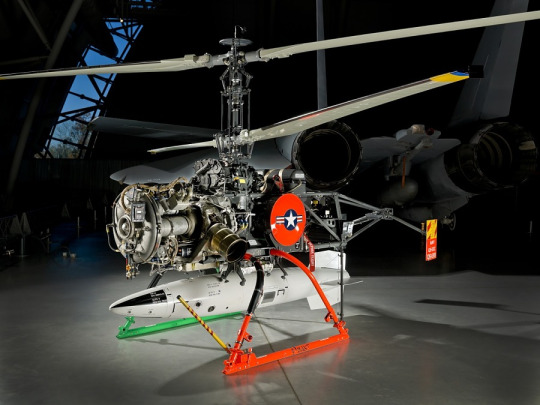
Gyrodyne QH-50 DASH was used to:
Attack submarines from a distance.
Conducting reconnaissance of enemy vessels.
Search and Rescue Helicopters
Sikorsky HH-3E Jolly Green Giant
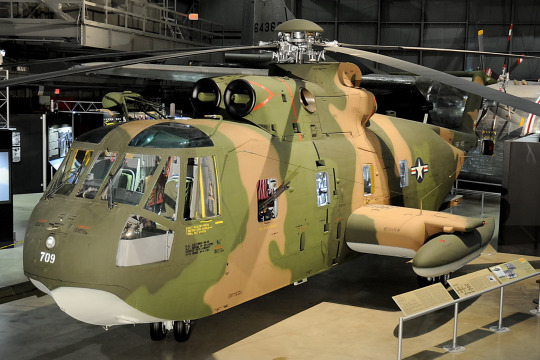
The Sikorsky S-61R is a twin-engine transport and search helicopter.
They were modified for:
Combat rescue missions
self-sealing fuel tanks
Rescue hoist
In-flight refueling abilities
Heavy-Lift Transport Helicopters
Sikorsky CH-37 Mojave

The Mojave is a large heavy-lift helicopter and was used to assist in the recovery of downed US aircraft, but it proved ineffective.
Sikorsky CH-53 Sea Stallion
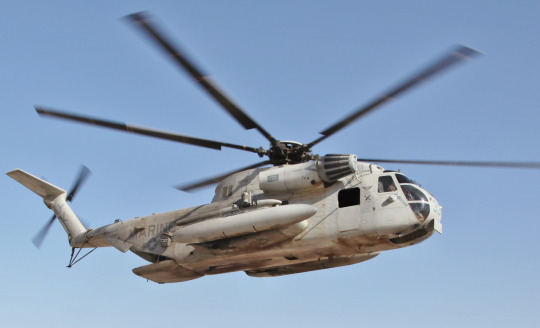
The Sea Stallion is a line of heavy-lift transport helicopters.
It was used for:
Sea transport
Recover downed aircraft
Sikorsky CH-54 Tarhe
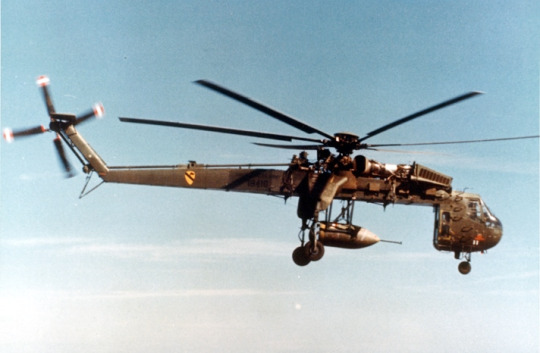
The CH-53 Tarhe was another heavy-lift helicopter.
It was used for:
Transport and recover downed aircraft.
Transport Helicopters
Boeing CH-47 Chinook
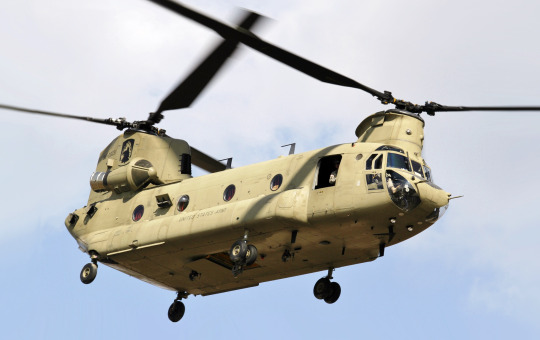
The Boeing CH-47 Chinook is a tandem rotor chopper.
It was used to:
Transport troops and cargo during
Boeing Vertol CH-46 Sea Knight

The Sea Knight is a medium left-tandem rotor helicopter used for transport but it was mostly used by the Marine Corps to transport personnel and cargo.
Piasecki H-21 Workhorse
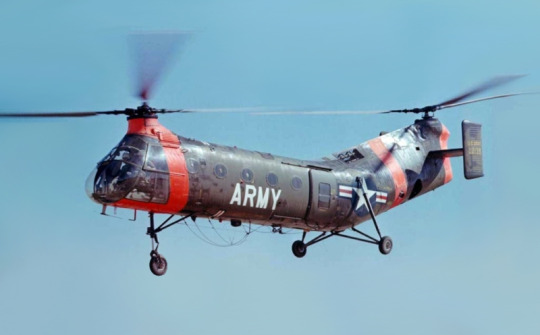
The-21C was extensively used by the US Army to transport troops and supplies.
CH-34 Choctaw
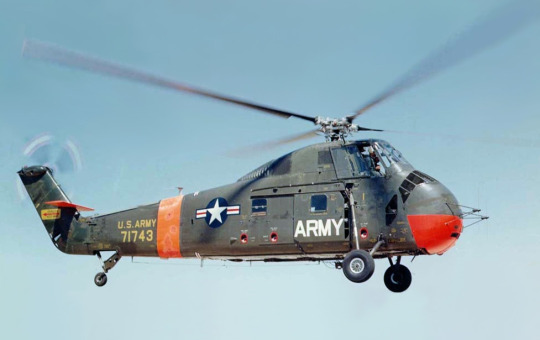
CH-34 Choctaw was made for transport purposes to carry personnel and deliver supplies but during the war, they modified it and put machine guns on it to act as gunships.
Multipurpose Helicopters
Bell UH-1 Iroquois
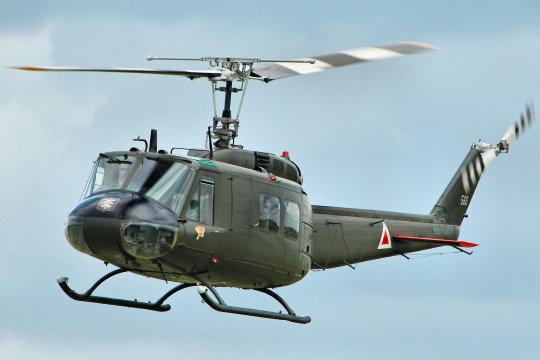
It was used for:
Troop and Cargo Transport
Medical Evacuation
Military Purposes
Sikorsky H-19 Chickasaw

Sikorsky H-19 Chickasaw was designed for both the US Army and Air Force but it was bearly used in the war.
0 notes
Text
The Vietnam war is a relatively famous event in history even over here of US invading Vietnam thinking it would be an easy fight given the numbers and power difference, unfortunately for them there enemy’s were avid enjoyers of Sun Tzu ‘s classic book ‘the art of war’ and using the tactics of Guerrilla warfare were able to divide and conquer through attacking in small groups and sowing chaos and uncertainty into there enemies, this isn’t a history blog though so let’s just talk about how the US used helicopters.

the Millitary used them for a different variety of things depending on the model, some were massive and meant to transport in troops, some were made for offence while smaller ones were made to act as drones and some were multi purpose, here’s a description of all the 24 types of helicopters listed on the site.
Attack Helicopters
Bell AH-1 HueyCobra / Cobra
The Cobra is a single-engine attack helicopter produced by Bell Helicopter as a primary attack helicopter in the Vietnam War for aerial assaults or as air cavalry. The AH-1 is sometimes affectionately referred to as the “Huey Cobra�� or “The Snake”.
Bell AH-1J SeaCobra
The SeaCobra was a twin-engine attack helicopter that was developed from the single-engine AH-1 Cobra helicopter. The AH-1J SeaCobra was used later in the later stages of the Vietnam war.
The Marine Corp used it for the sea-based interdiction of the Ho Chi Minh Trail in 1972. The Bell AH-1J was also used for various subsequent assaults and military operations conducted by the US Marine Corps.
Observation Helicopters
Hughes OH-6 Cayuse (Loach)
The Hughes OH-6 Cayuse is a light helicopter with a single engine and a four-bladed main rotor. It was used for transporting personnel, escorting other aircraft and naval vessels, attacking enemy units, and acting as an observation post.
The US military primarily used the OH-6 for observational and reconnaissance purposes.
Bell OH-58 Kiowa
The Bell OH-58 Kiowa was an entire line of military helicopters with a single engine and a single rotor. These helicopters were mostly used for observation, reconnaissance, utility, and for providing combat support.
This chopper is mostly known for having been used to spot enemy artillery.
Light Utility Helicopters
Bell H-13 Sioux
The Bell H-13 Sioux was developed as a light-weight single-engine and single-rotor helicopter.
The Bell H-13 Sioux were used for multiple roles, ranging from transporting troops, conducting medical evacuations, and performing reconnaissance and observational activities.
Bell Model 206
The Bell Model 206 is a line of both single and twin-engined helicopters with two primary rotor blades.
The Model 206 was mostly employed as a general utility helicopter, but at times it was also used for transporting troops and high command, in addition to serving observational and reconnaissance roles during the Vietnam war.
Hiller OH-23 Raven (Model UH-12)
The Raven was used as a scouting helicopter during the early phases of the war, before it was eventually replaced by the Cayuse in early 1986.
On a few occasions, the OH-23 was also used for medical evacuation purposes, but this was rarely the case.
Kaman HH-43 Huskie
The Huskie was used by the US Air Force, US Navy, and US Marine Corps. During the Vietnam War, it was mostly deployed for aerial combat and for conducting rescue operations in areas close to US Air bases. Late in the war, the HH-43 was also deployed for short overland search and rescue missions.
During the Vietnam war, the HH-43 Huskie was used for more rescue missions than all other aircraft combined. It was used prolifically because of its unique hovering abilities.
Gunship Helicopters
Bell UH-1B/C Huey Cobra / Frog
The Bell UH-1B/C was modified from the UH-1A Cobra to include a set of machine guns for attacking ground targets. The UH-1B/C was used sparingly during the Vietnam War.
ASW Helicopters (Anti-Submarine Warfare)
Kaman SH-2 Seasprite / Super Seasprite
The Seasprite was an anti-submarine and anti-surface helicopter that had over-the-horizon targeting facilities. The Kaman SH-2 could extend and increase both shipboard sensor and weapon abilities against different types of enemy units, including submarines, ships, and patrol craft with anti-ship missiles.
Despite its strong offensive abilities, the SH-2 Seasprite was mostly used for rescuing downed friendly aircrews instead of direct combat.
Drone Anti-Submarine Helicopters
Gyrodyne QH-50 DASH
The Gyrodyne company built the Gyrodyne QH-50 DASH (Drone Anti-Submarine Helicopter) to combat submarines from a distance. The Gyrodyne QH-50 was mostly designed to be used on ships that weren’t large enough to carry a full-sized helicopter.
Despite having been designed for anti-submarine combat, the Gyrodyne QH-50 was mostly used for conducting reconnaissance of enemy vessels in the Vietnam war, instead of actual combat.
Search and Rescue Helicopters
Sikorsky HH-3E Jolly Green Giant
The Sikorsky S-61R is a twin-engine transport and search helicopter. It was nicknamed the “Jolly Green Giant” during the war. These choppers were modified for combat rescue missions and had self-sealing fuel tanks, rescue hoist, and in-flight refueling abilities.
Heavy-Lift Transport Helicopters
Sikorsky CH-37 Mojave
The Mojave is a large heavy-lift helicopter that was deployed in the Vietnam War in 1965 to assist in recovery of downed US aircraft, but it proved ineffective.
Sikorsky CH-53 Sea Stallion
The Sea Stallion is a line of heavy-lift transport helicopters. The Sea Stallion is a variant of the Jolly Green Giant, but it’s used only for sea transport. In the Vietnam War, these choppers were used to recover downed aircraft.
Sikorsky CH-54 Tarhe
The CH-53 Tarhe was another heavy-lift helicopter designed to transport and recover downed aircraft. Unlike previous aircraft, the Tarhe was extremely successful during the Vietnam War.
Transport Helicopters
Boeing CH-47 Chinook
The Boeing CH-47 Chinook is a tandem rotor chopper that was developed by Vetrol and built by Boeing Vertol. It was mostly used to transport troops and cargo during the Vietnam war.
Boeing Vertol CH-46 Sea Knight
The Sea Knight is a medium left-tandem rotor helicopter used for transport. Primarily, it was used by the Marine Corp to transport personnel and cargo.
Piasecki H-21 Workhorse
The Piasecki H-21 Workhorse was the fourth line of tandem rotor helicopters developed by Piasecki Helicopters. The-21C was extensively used by the US Army to transport troops and supplies.
CH-34 Choctaw
The CH-34 Choctaw was developed by Sikorsky Aircraft for transport purposes to carry personnel and deliver supplies. Some units were modified during the war with machine guns to act as gunships.
Multipurpose Helicopters
Bell UH-1 Iroquois
The UH, nicknamed “Huey” is a utility military chopper that was used for troop and cargo transport, medical evacuation, and sometimes for military purposes.
Sikorsky H-19 Chickasaw
The Chickasaw was a multi-purpose helicopter designed for both the US Army and Air Force. It was barely used in the Vietnam War because it was replaced by the more advanced Sikorsky H-34 Choctaw.
Helicopters Used By the Vietnamese
Mil Mi-1 (Hare)
The Mil Mi-1 was a Soviet-made light utility chopper with three or four seats. During the Vietnam War, it was exclusively used by North Vietnam for reconnaissance and VIP transport.
Mil Mi-4 (Hound)
The Mil Mi-4 was a Soviet transport chopper used both for civilian and military purposes. It was mostly used as a transport chopper, but it could also deliver supplies to troops.
Mil Mi-8 (Hip)
The Mil Mi-8 is a Soviet medium twin-turbine helicopter. The Mil Mi-8 was developed in the later stage of the Vietnam War to counter the Bell Huey UH1
.Ramos, A. (2023) 24 helicopters used in Vietnam (and their purpose), EXECUTIVE FLYERS. Available at: https://executiveflyers.com/helicopters-used-in-vietnam/ (Accessed: February 16, 2023).
0 notes
Text
Vietnam War helicopters
The helicopter in the Vietnam conflict came into it's own, fulfilling a variety of roles for both sides. There are a total of 24 Vietnam War helicopters.
Bell AH-1 HueyCobra/Cobra - a dedicated two seat attack helicopter.
Bell AH-1J SeaCobra - a two seat attack helicopter.
Bell H-13 Sioux - Light Utility/Observation helicopter.
Bell Model 206 (JetRanger) - Light Utility helicopter.
Bell OH-58 Kiowa - Armed Scout and Reconnaissance.
Bell UH-1 Iroquois - Multi-role/Utility/Attack/Transport helicopter.
Bell UH-1B/C Cobra - Gunshi helicopter
Boeing CH-47 Chinook - Medium lift/Tandem Rota Transport helicopter.
Boeing Vertol CH-46 Sea Knight - Medium lift /Tandem Rota transport helicopter.
Gyrodyne QH-50 DASH -Drone Anti-Submarine helicopter.
Hiller OH-23 Raven - Light Utility.
Hughes OH-6 Cayuse - Light Observation/ Attack helicopter.
Kaman HH-43 Huskie - light Utility/Rescue helicopter.
Kaman SH-2 Seasprite - Ship based Anti-submarine Warfare.
Mil Mi-1 (Hare) - Liaison helicopter.
Mil Mi-4 (Hound) - Multi-mission utility helicopter.
Mil Mi-8 (Hip) - Multirole medium lift helicopter.
Piasecki H-21 Workhorse - Cargo/passenger Tandem Rota helicopter.
Sikorsky CH-37 Mojave - Heavy lift cargo helicopter.
Sikorsky CH-53 Stallion - Heavy lift transport helicopter.
Sikorsky CH-54 Tarhe/Erickson S-64 Skycrane - Heavy lift cargo/ firefighting helicopter.
Sikorsky H-19 Chickasaw - Multipurpose/ multirole helicopter.
Sikorksky H-34/CH-34 Choctaw - Transport/Close-Support helicopter.
Sikorsky HH-3E Jolly Green Giant - Search and Rescue helicopter.
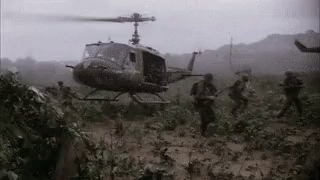
1 note
·
View note
Photo

Hmmm, I haven’t posted about my OCs in a hot minute...
Here’s Seasprite with his bubble tea :D
Bonus doodle:
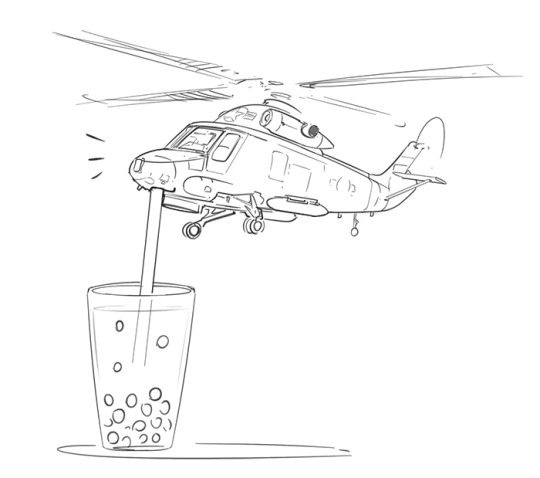
263 notes
·
View notes
Photo
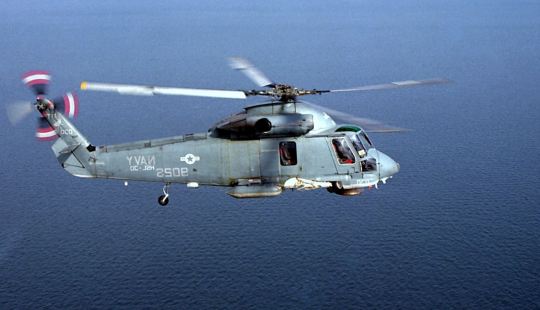
Kaman SH-2 Seasprite | Multi-role naval helicopter
source : https://www.militarymedia.net/2021/07/kaman-sh-2-seasprite-multi-role-naval.html
23 notes
·
View notes
Video
Kaman K-888 UH-2B / SH-2F Seasprite 150155 in Tucson by Johnny Comstedt
Via Flickr:
Anti-submarine helicopter c/n 105 to US Navy as UH-2B marked 150155, in 1971 modified to SH-2D, later to SH-2F. In Pima Air & Space Museum in Tucson, AZ, USA 18. October 2017. On loan from National Museum of Naval Aviation.
5 notes
·
View notes
Text
Vermont class guided missile battleships:

"After the Soviet Union shocked the postwar naval world with the launch of the 21,500 ton “heavy guided missile ship” Belorussiya in September of 1963, they ignited the most unlikely of events – a second battleship arms race. Within two years construction had begun on counter designs by the US, Great Britain, and France. The first to enter service was USS Vermont (BBG-72); she was commissioned in July of 1967.
The first battleships designed in the US since the Montana class (canceled in July of 1943), the four Vermont class ships; Vermont, Idaho, Nebraska, and Oregon, displaced nearly 27,000 tons standard and were 755ft (230m) long overall. The ships were capable of 33 knots with a range of 10,000 nautical miles and were armed with four 12”/55 Mk 9 rapid-fire guns in a new design Mk 60 twin turret mounted fore and aft. The Mk 9 was based on the 12”/50 Mk 8 guns used by the Alaska class adapted for use with semi-fixed ammunition (based in turn on the 8”/55RF Mk 16’s used by the Des Moines class heavy cruisers) with a practical ROF of 4-6 rounds per minute and a maximum range of 21.8 nautical miles – slightly better than the 16”/50 Mk 7’s mounted on the preceding Iowa class. Secondary guns consisted of six single 5”/54 Mk 42 guns amidships.
The primary missile battery comprised two Mk 18 four-round armored box launchers also located fore and aft for the RGM-33 Falchion anti-ship missile. The Falchion was a turbojet-powered supersonic cruise missile with semi-active radar homing guidance and a range of 130 nautical miles. Surface to air defense consisted of a RIM-24 Tartar launcher forward while a single ASROC box launcher amidships provided a limited ASW capability. Two Kaman UH-2 Seasprite helicopters could be accommodated on the helipad aft with an additional UH-2 stored in the below deck hanger.
Of the four ships built, USS Nebraska (BBG-74) was sunk during the South China Sea Crisis in 1977. The surviving ships were modernized in 1983-84 which included switching out the obsolete Tartar missiles for the new RIM-73 Tempest (although the Mk 13 launcher could only fire the short-range Tempest without the booster stage), and replacing the Falchions with RGM-81 Rapier anti-ship missiles fired from two Mk 32 launchers with protected below deck 14-round magazines. Four Mk 77 Paladin CIWS mounts as well as updated radar, fire control, and ECM systems were installed and the UH-2’s were replaced with SH-2F LAMPS I helicopters.
All three ships continued in frontline service until 2006 when they were decommissioned and placed in reserve.
In class: Vermont (BBG-72), Idaho (BBG-73), Nebraska (BBG-74), Oregon (BBG-75)
Built: 1965-1968
In commission: 1967-2006
Displacement: 26,930 tons standard, 29,300 tons full load
Dimensions: Length (o/a) 754.6 ft, length (w/l) 741.5 ft, beam 80.4 ft, draft (normal) 26.2 ft
Propulsion: 4-shaft, 4 x GE geared steam turbines, 8 x Babcock & Wilcox boilers, 178,000 shp
Performance: 33.0 knots
Range: 10,000 nm at 12 knots
Armor: STS-II alloy/Class C homogeneous. Belt 9” tapering to 5” ends, deck 4-6”, main turret face/other 12.8”/5.5”, barbettes 12”, secondary turret ammo hoists 5”, Falchion launcher 3”, conning tower 11”
Armament: 4 (2 x 2) 12”/55RF Mk 9, 6 x 5”/54 Mk 42, 2 x Mk 18 4-round ABL launchers for RGM-33 Falchion, 1 x Mk 13 launcher for RIM-24 Tartar w/40 rounds, 1 x Mk 16 8-round box launcher for RUR-5 ASROC, 1-3 Kaman UH-2 Seasprite helicopters
Sensors/Electronics: SPS-10 surface search radar, SPS-48 air search radar, SPS-40 air search radar, 3 x SPG-57 Falchion fire control, 2 x SPG-51 Tartar fire control, 2 x SPG-58 12” gun director, 4 x SPG-53 5” gun directors, SQS-26 sonar
Crew: 1,400"
This is a "What if" design by StealthJester, on shipbucket: link
#what if#AU#fan design#battleship#Guided Missile Battleship#united states navy#us navy#navy#usn#u.s. navy#my post
47 notes
·
View notes
Text
Giant Robots Vs Scale
I am well aware that scale does not exist in this franchise, and that my research was cursory at best, so take all of the following with a grain of salt.
So, the Dinobots. In terms of alt modes, we have:
Grimlock: Tyrannosaurus rex (40 feet long, 13 feet tall at the hips, 14 metric tons)
Snarl: Stegosaurus stenops (30 feet long, about 3 tons)
Slag: Triceratops horridus (26-30 feet long, 6.1-12.0 metric tons)
Sludge: Brontosaurus excelsus (72 feet long; 15 tons).
Swoop: Pteranadon longiceps (6 feet tall, 20-23 foot maximum wingspan, possibly around 35 pounds)
With the exception of Swoop, who's roughly human-sized in alt mode, discounting the wings, they're all pretty large, but not exceptionally so, especially compared to the alternate modes of most Decepticons. (Brawl, a Leopard A1 main battle tank, is 31 feet long; Vortex, a Kaman SH-2 Seasprite, is 44 feet long; the Seekers, who are all F-15 Eagles, are about 64 feet long, etc.)
This gave me the idea of scaling the Dinobots' alternate modes so that they're the same size proportionately to an Autobot car (usually around 13-15 feet tall) that the dinosaur off of which their alternate mode is based would be to a human. While this is absolutely not necessary for the fiction (especially since, as noted above, scale does not exist in this franchise), I thought it would be interesting to see the results. Assuming that we're measuring dinosaurs against a six-foot human male, this means that we're working with a size increase of (very roughly) X 2.5, which gives us the following results:
Grimlock: 100 feet long, 32.5 feet tall at the hips (note that Grimlock would probably be considerably taller at the head since he's an anatomically inaccurate Tyrannosaurus who stands upright), approximately 35 metric tons.
Snarl: 75 feet long, approximately 15 tons.
Slag: 65-75 feet long, approximately 15.25-30 metric tons.
Sludge: 180 feet long, 37.5 tons.
Swoop: 15 feet tall/long, 50 foot wingspan. He'd definitely be more than 87.5 pounds, since he's made of metal and doesn't need to be lightweight in order to fly like a real Pteranadon would, but that is what a 2.5 increase in weight would be compared to the original weight.
So if you want your Dinobots to be really big...there you go. (Well, except Swoop. Even X 2.5 his dimensions are only about equal to those of the Autobot cars...though he does have a longer wingspan than the F-16, the F-4, the Harrier II Jump Jet, and even the F-15).
Other useless (but funny) scale information:
Groove, the Honda Goldwing GL 1200 Police Motorcycle, is only about eight feet long. If we're nice to him and multiply his stats by 2.5 like we did with the Dinobots, that increases to 20 feet and actually makes him a bit larger than his generally 13-15 foot long car teammates. His weight would also increase from 875.5 pounds to 2,188.75 pounds. This would, however, make his motorcycle mode completely worthless as a disguise. (The Dinobots don't have this problem. Since they transform into metal versions of extinct animals, they're not fooling anyone regardless of how close they are to the size of the actual animals.)
Blades, his teammate, is a Bell UH-1V Iroquois Helicopter, and as such, is about 57 feet long and weights about 5,125 pounds (I'm presuming this is empty). If we decrease his size in the same way that we increased Groove's, this would make him 22.8 feet long and 2,050 pounds. He'd still be a little big, but he's scale much better with his teammates than he would at full size.
Streetwise is pretty simple. He's a Nissan 300ZX Turbo police car. He's 14.2 feet long and weighs in at 2,888-3,280 pounds, so pretty standard for a car.
First Aid is a Datsun Vanette C120 ambulance, and he's....surprisingly short. A Datsun Vanette C120 is only about 14 feet long. He's also about five and half feet wide, and weighs in at a surprisingly light 1,907-2,315 pounds. Have I been overestimating ambulance size this whole time, or is he just at tiny ambulance? Note that Ratchet and Ironhide are very similar in size to First Aid, as they are also Datsun Vanettes.
Hot Spot is a Mitsubishi Fuso Great Fire Engine, which was surprisingly difficult to find stats for. Based on the information I could find, he's nearly 25 feet long (24.93 feet) and weighs in at 16,931.5 pounds, making him the heaviest member of the team even if Blades is at full size. So, if we increase Groove's size by X 2 (X 2.5 seems a bit large) and decrease Blades by the same amount as we originally increased Groove, we'd actually have a kind-of sort-of reasonably scaled Protectobot team! As it stands, though, Groove and Blades are throwing everything off to a hilarious extent.
The Combaticons are a nightmarish mess. Since Swindle has become very strongly tied to a jeep alternate mode even though his original toy did not transform into a jeep, and his alternate mode animation model looks a LOT like Hound's, I'll be working off the assumption that Swindle is, in fact, a J59 Jeep, just like Hound. This would make him about 11.5 feet long and 2,665 pounds. This is small. If we multiply these stats by 2.5, this gets us 28.75 feet and 6,662.5 pounds. This would be a huge jeep, but he'd still be smaller (or at the very least, lighter) than all of his teammates.
Brawl is a Leopard A1 Main Battle Tank. (His animation model doesn't LOOK like one, but neither is it incredibly obviously something else, as is the case with Swindle.) Counting the fully extended turret, he's 9.54 meters, or 31.3 feet, long. (The main body of the tank is somewhere around 27 feet long.) He weighs in at 46.5 tons (that's 93,000 pounds!) However, as far as length is concerned, he scales reasonably well with a x2.5 Swindle.
Vortex is a Kaman SH-2 Seasprite helicopter. He's 38 feet, 4 inches long and weighs 7,040 pounds empty. This means he's about 7 feet longer than Brawl (including the turret), and about 10 feet longer than Swindle x2.5. Even at his absolute maximum weight capacity (13,300 pounds) he's still FAR lighter than the tank, however.
Onslaught is a headache, because, while he's obviously an anti-aircraft truck, neither his toy nor his animation model appear to be any particular type of anti-aircraft truck, making it really difficult to guess as to how large he might be.
A YouTube video posted by a user by the name of Nemesis Bloodryche suggests that he looks similar to the Russian BAZ-6909 10x10. It is 11,300 millimetres, or about 37 feet, long, and weighs 48,502 pounds (or about 24 tons). This would scale appropriately with Brawl and reasonably well with Vortex.
Blast Off is a space shuttle orbiter. (If he was the full space shuttle, he'd be even more massive than this!) He's 122 feet long, with a width of 58 feet and 7 inches and a wingspan of 78 feet. This means that he is wider than any of his teammates are long. He weighs in at a 53,930 pounds, which, while impressive, is somehow still less than Brawl (93,000 pounds). He's 3 times longer than Vortex and Onslaught, 4 times longer than Brawl sans turret and Swindle X 2.5, and almost 11 times longer than a properly-scaled J59 Jeep Swindle. Needless to say, he and Swindle are the main reason that Bruticus is such a mess, scale-wise. Believe it or not, though, Blast Off still isn't the worst in terms of scale. Also, if we kept Swindle's increased size and decreased Blast Off's size by the same factor, things would at least become slightly more reasonable, as this would give us a 48.8 foot long Blast Off, which, while still big, is not as ridiculously so.
Most of the Aerialbots, being fighter jets, are at least somewhat reasonably scaled. Slingshot, the Harrier II, is 46 feet long and 12,500 pound empty; Skydive, the F-16, is 49 feet, 5 inches long and 18,900 pounds empty; Fireflight, the F-4 Phantom II, is 63 feet long and 30,328 pounds empty; Air Raid, the F-15 is nearly 64 feet long and weighs 28,500 pounds empty. It's not perfect by a long shot, but it works if you squint, especially since Slingshot is usually depicted as smaller than the others. And then Silverbolt ruins everything. Silverbolt is a Concorde SST, 202 feet long and 173,504 pounds empty. He's longer and heavier than Blast Off, the space shuttle orbiter! Sure, the torso should logically be a bit larger than the combiner limbs, but this is just ridiculous. He's 3.2 times longer than Air Raid, his longest teammate, and 5.7 times heavier than Fireflight, his heaviest teammate! He's even 1.86 times heavier than the 46-ton tank and 1.65 times the length of the space shuttle orbiter! If we reduce his size by a factor of 2.5, Silverbolt would be 80.8 feet long and weigh 69,401.6, which, while not perfect, would be a lot more manageable than a full-sized Concorde SST.
The Stunticons have a similar problem. The four small cars actually scale even better than the Aerialbots. Drag Strip, the Tyrell P34, is 13.58 feet long and weighs 1,370 pounds. Breakdown, the Lamborghini Countach, is also 13.58 feet long, and weighs 2,978 pounds. Wildrider, the Ferrari 308 GTB, is 13.87 feet long and weighs 2,784 pounds. And Dead End, the Porsche 928, is 14.8 feet long and weighs between 1,450 and 1,620 pounds. They're not perfect, but they're all within less than three feet of one another! That's considerably better than the differences between the smaller Aerialbots, and MUCH better than the scale difference between, say, Blades and Groove. But then there's Motormaster. He is a truck and trailer. The "truck" part is the Kenworth K100 Aerodyne sleeper truck, which is about 20 feet long. The problems come in with the "trailer" part. A box trailer is about 48 feet long, and, since Motormaster's robot mode is composed of both truck and trailer, this makes him around 68 feet long, with a rough weight estimate of somewhere between 10,000 and 25,000 pounds. While he's not as huge as Silverbolt, he is just as large, if not larger, compared to his largest teammates, being 4.6 times longer than Dead End and 3.35-8.37 times heavier than Breakdown. Again, thanks to the YouTube video mentioned above for the length of the trailer. That being said, if we did what we did with Blades and Silverbolt and reduced his size by a factor of 2.5, Motormaster would be 27.2 feet long and between 4,000 and 10,000 pounds, and things would actually scale rather well. (This would also help to mitigate the scale discrepancy between Motormaster and Optimus Prime.)
Astrotrain, like Blast Off, is a space shuttle orbiter, 122 feet long and 53,930 pounds. However, unlike Blast Off, he is also a train: the JNR Class D51, which is 64 feet long. (There is a weight listed for the train, 76.8 tons, but I'm not sure if this weight refers only to the engine. Astrotrain's body is composed only of the engine, not the entire train.) This means that, when transforming from a train into a space shuttle, Astrotrain almost doubles in length!
Broadside transforms into some sort of fighter jet (neither the G1 toy nor the animation model resemble any known jet enough to tell for sure). For the sake of argument, we'll say he's an F-15. The F-15 is almost 64 feet long. His other alternate mode is an aircraft carrier. A Nimitz class aircraft carrier is 1,092 feet long. Broadside's aircraft carrier alternate mode would be 16 times longer than his airplane mode! Even Silverbolt, who is massive, would be 5.4 times shorter than Broadside's aircraft carrier mode! As insane as Astrotrain's doubling in length is, Broadside increasing his size by a factor of 16 is much, much more so.
Metroplex transforms into....a city? (Okay, so he really looks like he transforms into a fort, but it's more fun to imagine the scale of a true city-sized robot.) The largest city by land mass in the US, Oklahoma City, is 621 miles squared. While square miles can't really be used to measure distance, it is very, very roughly 16-ish miles in diameter. If Metroplex is the size of Oklahoma City (unlikely), this would make him around 84,480 feet tall. Mt. Everest is 29,032 feet tall. Metroplex would be nearly 3 times the height of Mt. Everest!
When it comes to determining Unicron's scale, the answer depends on whether we go with the roughly moon-sized Cybertron seen in the cartoon or the apparently Saturn-sized Cybertron of the comics. Please note that these estimates are VERY rough.
The diameter of the Moon is 2,158.8 miles. If we assume, as seems probable, that Unicron at least doubles in length when he transforms, this would make him at least 4,317.6 miles tall. That's 22,796,928 feet tall! His gravitational force would be about 1.6 meters per second squared, and would have a mass of 7.342×10 to the 22nd power kg. (Mathematical expressions don't seem to work properly on this site.)
If Unicron is instead the size of Saturn, he would have a diameter of 72,376 miles. If we double this, we get 144,752 miles tall or 373,460,160 feet! He would have a mass of at least 5.683 X 10 to the 26th power kilograms, and a gravitational force of at least 10.44 meters/second squared. I'm also pretty sure that it would be next to impossible to get a solid planet at this size. Saturn, unlike Unicron, is made of gas, enabling it to be much larger than a metal planet could logically grow.
#transformers#scale#transformers g1#combaticons#stunticons#dinobots#aerialbots#protectobots#unicron#triple changers#long post
54 notes
·
View notes
Text
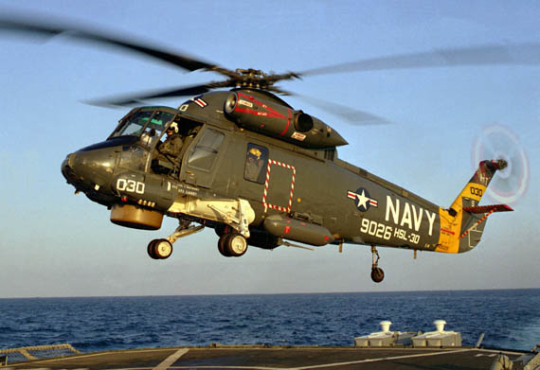
The Kaman SH-2 Seasprite is a United States Navy ship-based helicopter with anti-submarine, anti-surface threat capability, including over-the-horizon targeting. This aircraft extends and increases shipboard sensor and weapon capabilities against several types of enemy threats, including submarines of all types, surface ships, and patrol craft that may be armed with anti-ship missiles.
The Seasprite's primary missions include anti-submarine and anti-surface warfare, anti-ship missile defense, and anti-ship surveillance and targeting. Secondary missions may include medical evacuation, search and rescue, personal and cargo transfer, as well as small boat interdiction, amphibious assault air support, gun fire spotting, mine detection and battle damage assessment.
14 notes
·
View notes
Photo
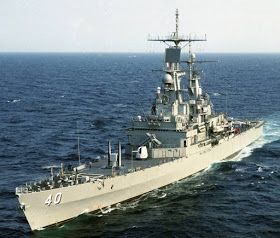
Written by D-Mitch USS Virginia (CGN-38) lead ship of the Virginia class nuclear- powered cruisers, prior her refit in the '80s. Elegant and heavily armed warships, the Virginia-class nuclear-powered guided-missile cruisers were a series of four double-ended (with armament carried both fore and aft) guided-missile cruisers commissioned in the late 1970s, which served in the United States Navy until the mid-to-late 1990s. A fifth warship, the CGN-42, was canceled before being named or laid down. With their nuclear power plants, and the resulting capability of steaming at high speeds for long periods of time, these were excellent escorts for the fast nuclear-powered aircraft carriers, such as the Nimitz-class aircraft carrier. Their main mission was as air-defense ships, though they did have excellent flagship facilities, capabilities as anti-submarine (ASW) ships, surface-to-surface warfare (SSW) ships, and in gun and missile bombardment of shore targets. The double ended Virginia class cruiser with her flight deck as it was before the refit. USS Mississippi (CGN-40) The Virginia class cruisers were built as improved versions of California class nuclear-powered cruisers and they share similar layout. The main difference was the new Mark 26 twin-arm launcher instead of the Mk 13 launcher of the California class ships and the absence of the ASROC launcher. The Mk 26 could launch also ASROC rockets except the Tartar surface-to-air missiles (SAM) which were replaced by the SM-1 SAM later on (the latter where replaced by the even more advnaced SM-2 SAM) and thus a separate ASROC launcher was not needed. The elimination of the separate facilities for ASROC enabled the hull to be shortened by 3.3m. The introduction of the SM-2MR which needs target illumination only in the terminal phase enabled the two forward SPG-51 trackers/illuminators of the Californias to be eliminated and thus reducing top weight. Moreover, in comparison with Californias, the new vessels had a hangar to accommodate one helicopter. This helicopter hangar was beneath the quarterdeck, a quite unusual feature. A lift transferred the helicopter from the flightdeck to the hangar. The helicopter hangar measured 12.8m x 4.3m and was served by an electro-mechanical elevator covered by a telescopic hatch. This arrangement in a ship other than an aircraft carrier was the first (and last) since the De Moines class cruisers of the '40s. In general the ships of the class had similar (and sometimes improved electronics) with the California class, especially after the refits of both classes. The ships of the class also had limited armor around important parts. Specifically, one inch Kevlar plastic armor was installed around combat information center, magazines, and machinery spaces. Modified photo of a Virginia class cruiser of the U.S. Navy. For a high resolution image click here. A Sea King helicopter operating above the USS Mississippi (CGN-40). Photo: Robert Scoggin, US Navy USS Arkansas (CGN-41) cruiser after her refit in 1985. Photo: Charon, US Navy During the ships' refit in the late 1980's, the Virginia class cruisers received gradually the SM-2 MR (RIM-66J) SAM that replaced the SM-1 (SM-2 has double the range of SM-1, about 80km range), two Phalanx close in weapon systems (CIWS), two quadruple Harpoon launchers and Tomahawk cruise missiles (known as Tomahawk Land Attack Missiles - TLAM) in two armored box quad launchers installed at the flightdeck. The Tomahwak missiles were installed after a decision was taken to remove the helicopter from the ships' equipment as the Virginias were encountering problems with the elevators and in keeping the hangars watertight. Therefore, the capability of the ships to carry a Kaman SH-2 Seasprite LAMPS (Light Airborne Multipurpose System) helicopter either in the hangar or stationed at the deck, it was eliminated. Their electronics and sensors also were upgraded or replaced by more modern ones (such as the AN/SPS-49 radar, although USS Virginia kept the older AN/SPS-40). Loading a training round in the magazine of the aft Mark 26 missile launcher of USS Arkansas (CGN-41). Loading arm door in the magazine of the aft Mk 26 launcher of the USS Arkansas (CGN-41) cruiser. BGM-109 Tomahawk TLAM is launched toward a target in Iraq from a Mark 143 Armored Box Launcher (ABL) of USS Mississippi (CGN-40). Reload of Tomahawk launcher aboard the USS Arkansas (CGN-41). Mk 32 torpedo launcher of a Virginia class cruiser. USS Virginia after her refit The USS Virginia (CGN-38) after her refit in the '80s. Mk 45 gun firing. Notice the Harpoon launchers and the Mk 26 launcher. Virginia and Mississippi served with the Atlantic Fleet and Texas and Arkansas with the Pacific Fleet. Two proposals for the construction of modified Virginia cruisers fitted with Aegis system were cancelled in 1979 and 1983 respectively. Planned Refueling Complex Overhauls were cancelled in the early 1990s due to the expense of maintaining the nuclear propulsion components and the requirement for high manpower (Virginias had a crew of about 600 men!), and the ships were all decommissioned after a relatively brief period of service averaging somewhat less than two decades. Thus, the Arkansas, the last of the class that was commissioned in 1980 with a life expectancy of 38 years, though it was decommissioned in 1998 after less than half that period in service. USS Mississippi (CGN-40). Photo: Alexander C. Hicks USS Virginia (CGN-38) cruiser USS Mississippi (CGN-40). Photo: Alexander C. Hicks USS Texas (CGN-39) leads USS Princeton while flying the state flag of Texas. USS Arkansas (CGN-41) at sea in 1985. USS Mississippi executing a turn. Photo: Darrel E. Erickson The early retirement of the Virginia class cruisers was criticized by some circles that time. They were new, modern ships; given a New Threat Upgrade electronics overhaul, they would have been well-suited to modern threats. They had rapid-fire Mk 26 launchers that could fire the powerful Standard SM-2MR medium-range surface-to-air missile - earlier decommissioned cruisers used the slower-firing Mk-10 launchers, which required manual fitting of the missiles' fins prior to launch. Nevertheless, the Virginias, with their Mk 26 missile launchers and magazines, were incapable of carrying the SM-2ER long-range surface-to-air missile, being restricted to the SM-2MR medium-range surface-to-air missile. This was a significant limitation in their capabilities. Another weakness was the loss of LAMPS helicopters, due to the installation of Tomahawk cruise missile launchers. USS Arkansas (CGN-41) cruiser in 1985. Photo: Dostie USS Texas (CGN-39) prior her refit USS Arkansas (CGN-41) in 1994 USS Texas (CGN-39), third ship in the Virginia class cruisers USS Mississippi (CGN-40) underway in the Suez Canal in 1990 The Virginia class cruisers were the last nuclear-propelled surface ships (other than aircraft carriers) to be built by the United States Navy. In 1999, one year later than the decommissioning of the last ship of the class USS Arkansas in 1998, their two older cousins, the Californias, were retired and thus the era of nuclear-powered surface combatants of US Navy ended. USS Virginia (CGN-38) cruiser (1976-1994)
17 notes
·
View notes
